










There can’t be many things that are good for you, great fun, and save you money –but all three apply to riding a bike.
Cycling boosts your mental and physical health. Riding just a few miles a week can make a difference to your energy levels, and keep your heart and lungs healthy and strong.

If you use two wheels to get to college or work, you’ll be saving money over the bus or train, and you’ll probably get where you’re going more quickly too. Why sit in traffic when you can ride past it?
Whether you are new to cycling or dusting off a bike from the back of the shed, The Ultimate Guide to Cycling is here to help. We’ll show the benefits of riding, teach you to cycle more safely, and will guide you through all the latest kit. Enjoy the ride!

David Motton, Editor
Publisher: James Evans Editor: David Motton
Art director: Caroline Creighton-Metcalf
Commercial director: Richard Storrs
Contact us info@firstcar.co.uk 08451 308853



CYCLING IS GOOD FOR YOU, GREAT FUN, AND SAVES YOU MONEY



You need to ask? Cycling will improve your health, save you money and make you smile.


The local bike shop isn’t the only place to buy your bike. We explain all the options.
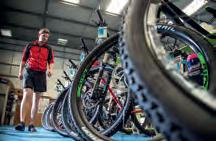
Safety is no accident. Follow these tips to become a confident and safe cyclist.

Keep your bike running smoothly and safely with our guide to basic bicycle maintenance.

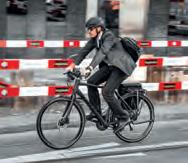
That shiny new bike could cost less than you think, thanks to the Cycle to Work scheme. Here’s what you need to know.

From road bikes to MTBs, we’ll help you find the right kind of bike for your style of riding.
Big changes have been made to the Highway Code to protect vulnerable road users.

Take out cycle insurance and you won’t be out of pocket if your bike is stolen or vandalised.
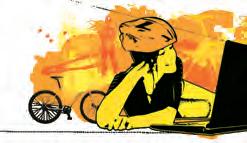
Stay warm, keep dry and be seen with the right kit, clothing, and cycling accessories.


Lock it, don’t lose it! Our guide to securing your bike outside and at home.

With so many benefits, why wouldn’t you ride a bike?
CYCLING IS GOOD for you, and not just because it can make you fitter. It’s a great way to save money, save time and have fun too. Riding a bike gives your heart and lungs a good workout, but doesn’t have to be strenuous. Modern bikes have as many as 30 gears and are made of lightweight materials, so riding to college, the factory or the office needn’t turn into a slog. Even gentle riding will get your pulse rate up and burn some calories, and the health benefits can last a lifetime.
You won’t only be fitter than your mates waiting in line for the bus, you’ll be better off as well. A quality new bike may cost a few hundred pounds, but use it regularly instead of public transport or a car and in the long run you’ll be quids in.
What’s more, it’s hard to think of anything else so good for you which is also so enjoyable. Regular riders know that cycling is fun, and scientists know that cycling releases endorphins – chemicals produced by the body which give a natural feeling of well-being.
So, park the car or put away that season ticket. It’s time to get on your bike.
Worried that riding to work every day will be tiring? Then begin commuting by bike a couple of days each week. Add extra rides as your fitness and confidence improve.
Regular riding will enhance lung function, which is especially beneficial for anyone suffering from bronchitis or asthma.
Cycling just 20 miles a week can reduce the risk of coronary heart disease by 50%, according to the British Medical Association.

Scientists at Stanford University have discovered that cycling can help protect your skin against UV radiation and reduce the signs of ageing.
Just 92 minutes of lowlevel exercise per week can increase a person’s life expectancy by three years, according to one Taiwanese study.
Exercise such as cycling can improve your memory function. A study by the University of Illinois and the University of Pittsburgh found that physically fit test subjects performed 40% better in memory tests than those who were unfit.
Just how much energy is used when cycling depends on a person’s weight and how hard they are riding, but an hour of vigorous cycling can burn as many as 700 calories.
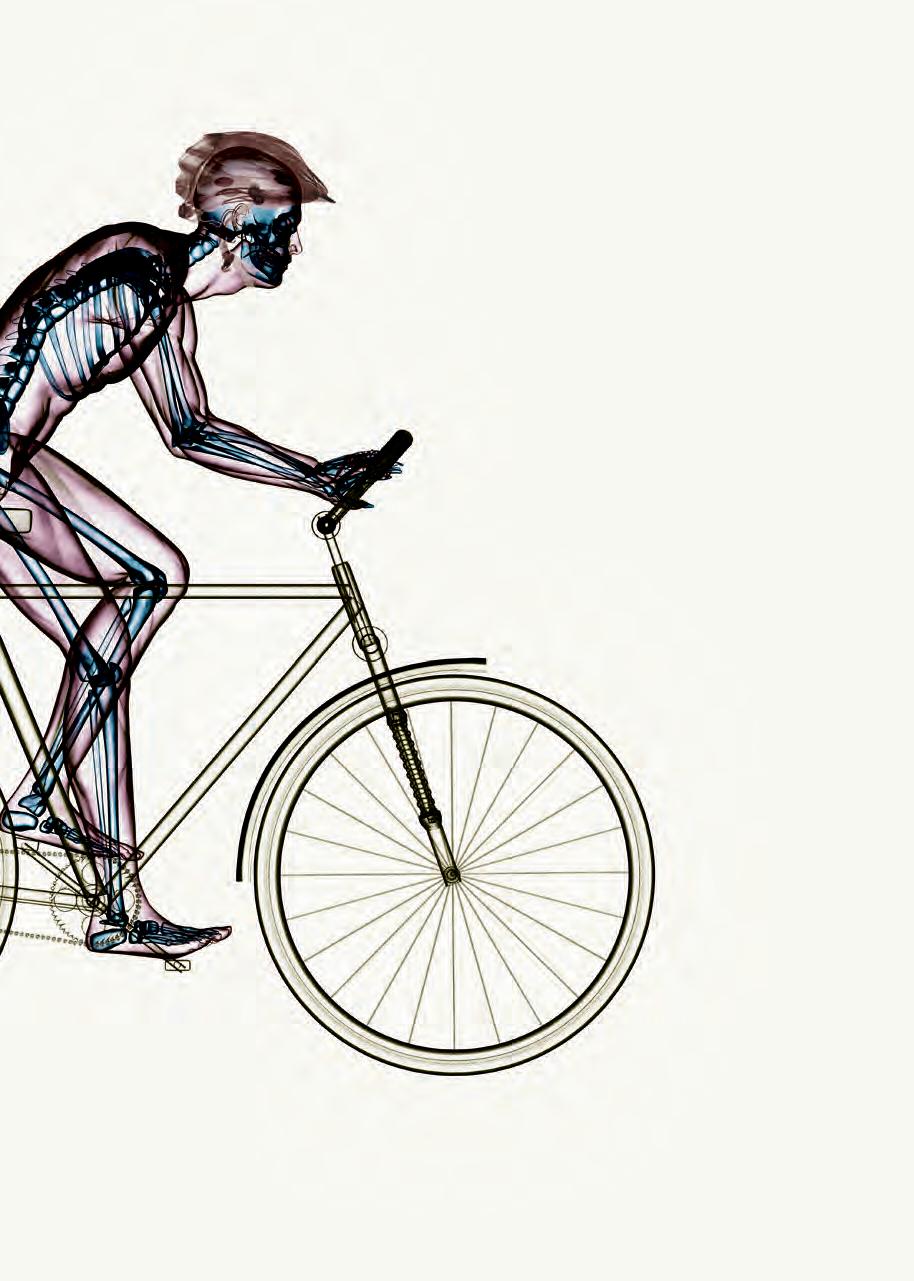
Cycling is a low-impact form of exercise, so unlike jogging or running there’s very little pressure on your joints.
Buying a bike won’t break the bank, and will save you money in the long run
COMPARED WITH JUST about any other type of travel, cycling will save you money. Unless you want to walk everywhere you go, get on your bike and you’ll be quids in.
Spending £300-£400 is enough to buy a decent new bicycle. Pay the same for a used car and you’ll be crossing your fingers every morning in the hopes that it will start.
The cost of buying a car is just the start. Fuel, insurance and servicing all need to be paid for, and those bills soon add up. According to the RAC Report on Motoring 2022, 62% of drivers aged 1724 and 25-44 rank fuel prices as their top concern over the cost of driving. Some 23% of drivers aged 17-24 have stopped taking their car to be washed to save money.
So, will you still be able to go out on a Friday night if you sell the car and rely on public transport instead? Maybe, maybe not. Single adult bus fare

prices in England are capped at £2 until the end of June 2023. That means a three-mile journey costs 66.7p per mile. The government’s own figures suggest the cost without the cap would be £2.80, or 93.3p per mile for a three-mile trip.
What about the train? Now, this should work out cheaper per mile than the bus, but the true cost varies hugely depending on the route, the time of day and how far in advance tickets are booked. What’s more, the nearest station could be miles away from home unless you live in a big town or a city.
So, you’ll need to factor in the cost of getting to the station, which unless you’re close enough to walk means spending more money. At least you could save a few pounds by riding to the t rain station on your bike...
If your journey is a long one, become a multi-mode commuter. Take a bike to the station, hop on a train, then ride to your destination. Just check first that bikes are allowed on the train.

Getting from A to B can be a very expensive business. Which is why riding a bike is such a smart choice.
We’ve compared the cost of different forms of transport, calculating the cost of running a bicycle ourselves. To give the other ways of getting around a fighting chance we’ve been really hard on the poor old bike. We’ve assumed a short commute of just
three miles each way, and have used a very pessimistic estimate of how much a bike would be worth after three years. In reality, look after a bike and it will be worth a lot more than 8% of the original price. Even though our own cycling stats take a worst-case scenario view, just look how much cheaper it is to commute by bicycle rather than car, bus or train.
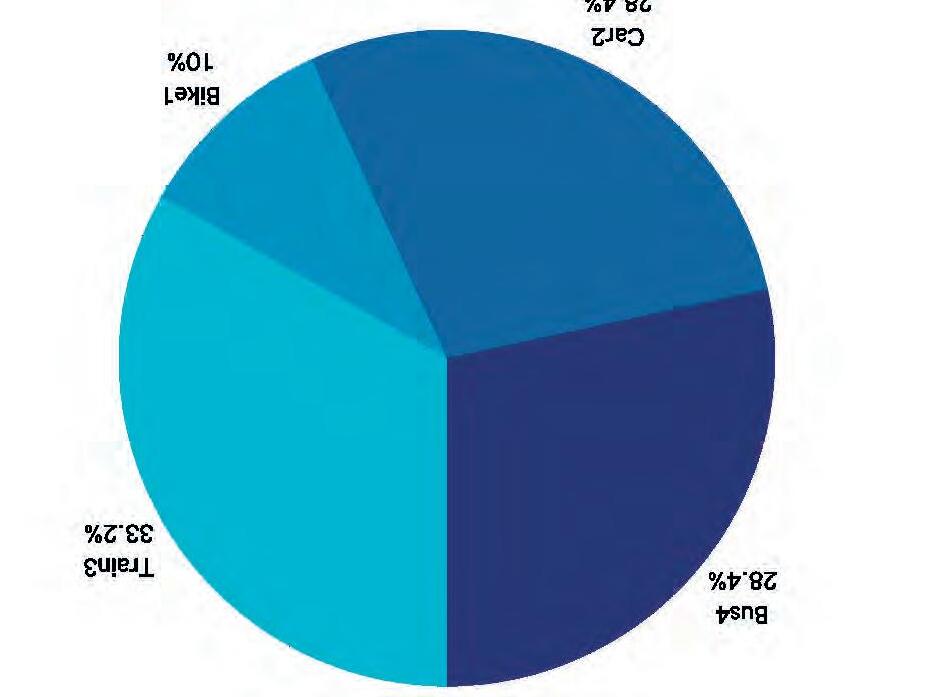
PEOPLE WHO RIDE a bike regularly are in on a secret. Cycling makes you happy. You don’t have to ride far or fast, just cycling to work or college can be enough. Nine times out of 10 you’ll end a bike ride in a better mood than when you started.
This isn’t just pro-cycling propaganda. It’s rooted in science. Cycling (and other forms of exercise) cause the body to release chemicals called endorphins. These chemicals reduce the perception of pain, but can also lead to feelings of exhilaration and well-being.
Cycling doesn’t just perk you up if you’re in a reasonably good mood to start with. There’s plenty of evidence that cycling can help with depression. Researchers at the University of Southern Mississippi found that when people with a generalised anxiety disorder exercised at 60-90% of their maximum heart rates for 20 minutes, three times per
week, there were significant decreases in anxiety sensitivity and fear.
Other kinds of travel can have a very different effect. One American survey asked 900 women how much they enjoyed a number of everyday activities. Commuting came in dead last. What’s more, the longer you spend stuck in a car, train or bus the more unhappy commuting is likely to make you. A survey conducted for the Gallup-Healthways WellBeing Index found that among employees who took more than 90 minutes getting home from work, 40% experienced worry during the day. That dropped to 28% for those with short commutes of 10 minutes or less.
If a car cuts you up or a pedestrian steps out in front of you, don’t get mad. Concentrate on staying safe and calm.
Why worry if you commute by bike? Forget about being caught in traffic, missing the bus, or being stuck under someone’s armpit on an overcrowded train. Go by bike, and you’ll enjoy your own space, not to mention a few quiet minutes away from email, ringing phones and the stress and strain of a busy day.
Not only will regular cycling put a smile on your face, you’ll be doing your bit for the environment too. Cycling isn’t quite emissions-free. There’s the environmental cost of building a bike, plus the carbon dioxide the rider breathes out. The European Cyclists Federation took this into account to
come up with carbon dioxide (CO2) emissions of just 21g/km for a bicycle. The same methods resulted in an average figure of 271g/km for a car. What’s more, the human ‘engine’ of a bicycle emits no harmful particulates or carbon monoxide, substances which reduce air quality and can cause health problems.
Get on your bike for a good night’s sleep. Cycling for 20-30 minutes a day helps people with insomnia fall asleep twice as fast, according to Stanford University School of Medicine.

SPREAD THE LOVE GET HAPPY
If you know someone who is thinking of cycling but doesn’t own a bike, you could lend them yours for the weekend. Sit back and watch the smile slowly spread across their face.
Cyclists are the happiest of all commuters, according to research by the Oregon Transportation Research and Education Consortium. Walkers are a close second.
There are so many kinds of bike, it can be hard to know which to buy. Let us guide you through all the options
CHOICE IS A good thing, but it can also be bewildering. Take the range of bikes available from your local bike shop. From mountain bikes to hybrids to BMX and a whole lot more besides. How do you choose which is right for you?
It really comes down to what you plan to use the bike for. A single-speed bike may look good outside a trendy café, but it won’t look so cool being pushed up a steep hill. And while a BMX will fit in at the local skate park it won’t be practical if your job is a several miles from home. Over the next few pages we’ll talk you through the many different styles of bike to find the one that suits you best.
Choose a road bike for a speedy and lively ride

What is it?
A road bike or racing bike comes with drop handlebars and skinny wheels and tyres. It’s built for speed on tarmac rather than dealing with rough surfaces.
These days road bikes come in a variety of flavours. Some are made to offer comfort as well as speed with more upright riding

Mountain bikes can tackle any surface
What is it?
Despite the name, a mountain bike isn’t just for riding on mountains. It’s for all kinds of off-road riding.
The choice of mountain bikes (also known as MTBs) can be even more confusing than the variety of road bikes. A few mountain bikes have
positions, while some have mounting points for mudguards and racks to carry bags. Others are designed for racing and competitive riding, with fewer concessions to practicality.
Most affordable road bikes are made from aluminium, with carbon fibre largely taking over on bikes costing £1500 or more.
Steel bikes may not be cutting edge but score points for their retro style, while super-durable titanium frames are a viable alternative to carbon fibre if you’ve got deep pockets.
Why ride one?
Speed is the obvious advantage of choosing a road bike. Their light weight makes them easier to get up to speed or ride uphill than most other kinds of bicycle.
Even if you’re not in a hurry, a road bike will help you cover the same journey in the same time for less effort.
Why ride something else?
Because you want to be able to ride on tracks as well as on the road, or would prefer a more upright riding position.
no suspension, others have front suspension, many have suspension front and rear. Then there’s the amount of suspension travel to consider, and whether to go for 26-inch, 650B or 29-inch wheel sizes.
More extreme riding benefits from having suspension at both ends of the bicycle to take the sting out of rocky tracks, but if you want a bike that’s tough enough to hit the trails but still rides well on the street then a ‘hardtail’ (a bike with front suspension only) is probably a better bet.
All three wheel sizes have their supporters, although 26-inch wheels aren’t as popular as they used to be.
Why ride one?
A mountain bike can tackle any terrain. You can muck about on the trails at the weekend then use the same bike to get to work on Monday.
Why ride something else?
If most of your journeys are on tarmac or smooth trails, then riding a mountain bike is a bit like wearing walking boots to go to the corner shop. Other choices will be lighter, and will go faster for the same effort.

A good choice for commuting
What is it?
A bike which folds up for ease of storage or carrying on other forms of transport. No space for a full-sized bike in the flat? A folder will fit in a cupboard or under the stairs. Or maybe you want to save time at either end of a train journey? A folder is ideal for multi-mode commuting.
Folders usually have much smaller wheels than regular bikes, with 16 and 20-inches being the most common sizes. As a rule, the smaller
What is it?
A touring bike is designed for cycling long distances, often with luggage. But that’s not to say that a tourer only makes sense if you are planning to ride from Lands End to John O’Groats.
A tourer will do just about anything a road bike will do, only a bit slower. Designed for durability, stability and comfort rather than speed, a touring bike is just as capable of handling the daily commute as a week-long camping holiday.
Tourers tend to use tried and tested technology, and are often built around steel frames. Mudguards and racks are often included in the price of a new tourer, or at the very least you can expect fittings for both.
Most bikes of this kind have drop bars, giving a variety of riding positions for all-day comfort, but some tourers use MTB-style flat handlebars.
Wheels tend to be heavier but more sturdy than those fitted to racing bikes, with tyres designed for puncture resistance and reasonable grip on tarmac as well as
the wheel, the smaller the fold.
You might think that being hinged in the middle would make a folder feel odd or awkward to ride, but with a few exceptions most folders feel surprisingly normal.
Folding bike enthusiasts have ridden around the world on their bikes, so there’s little a good folder can’t do.
Why ride one?
Because you want to commute a long distance, sandwiching a journey on public transport with a bike ride at either end. Used this way a folder opens up new possibilities. Journeys which are awkward and inconvenient using public transport alone become quick, easy and healthy with a folder. Or perhaps you are short of storage space. A folder can be stored under the stairs or in the corner of a utility room.
Why ride something else?
If you never intend to take your bike on public transport and you have a shed or garage to store it in then you don’t need a bike which folds away when it’s not being ridden.
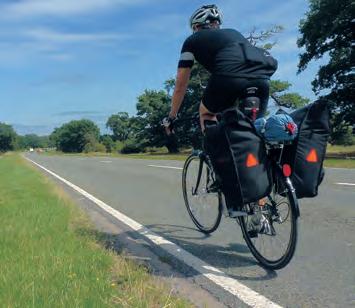
Head off on an adventure you won’t forget
bridleways and towpaths. You can tackle a variety of surfaces on good touring tyres.
Why ride one?
Because practicality, comfort and versatility are more important to you than going quickly.
Why ride something else?
You want to ride fast, on or off-road, or are put off by the slightly staid image.
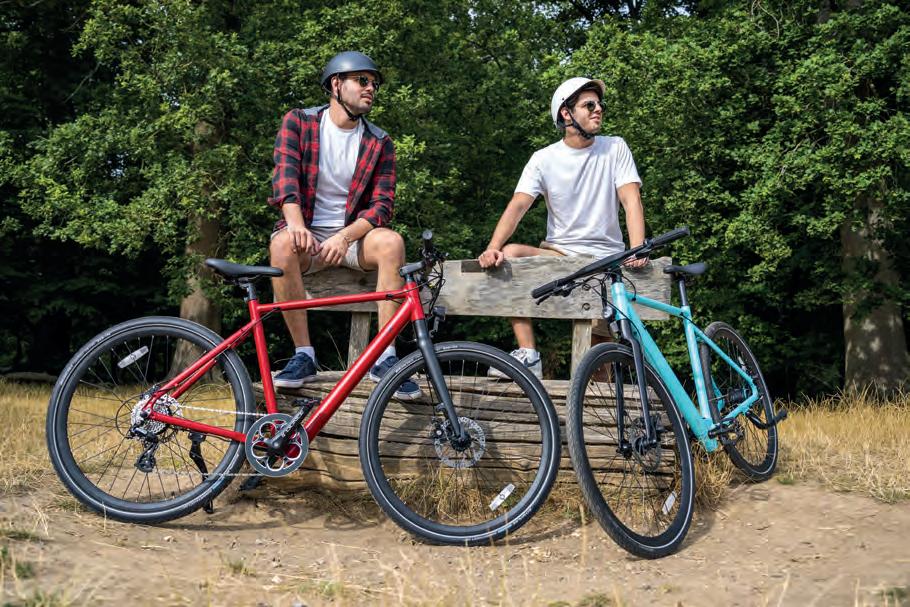


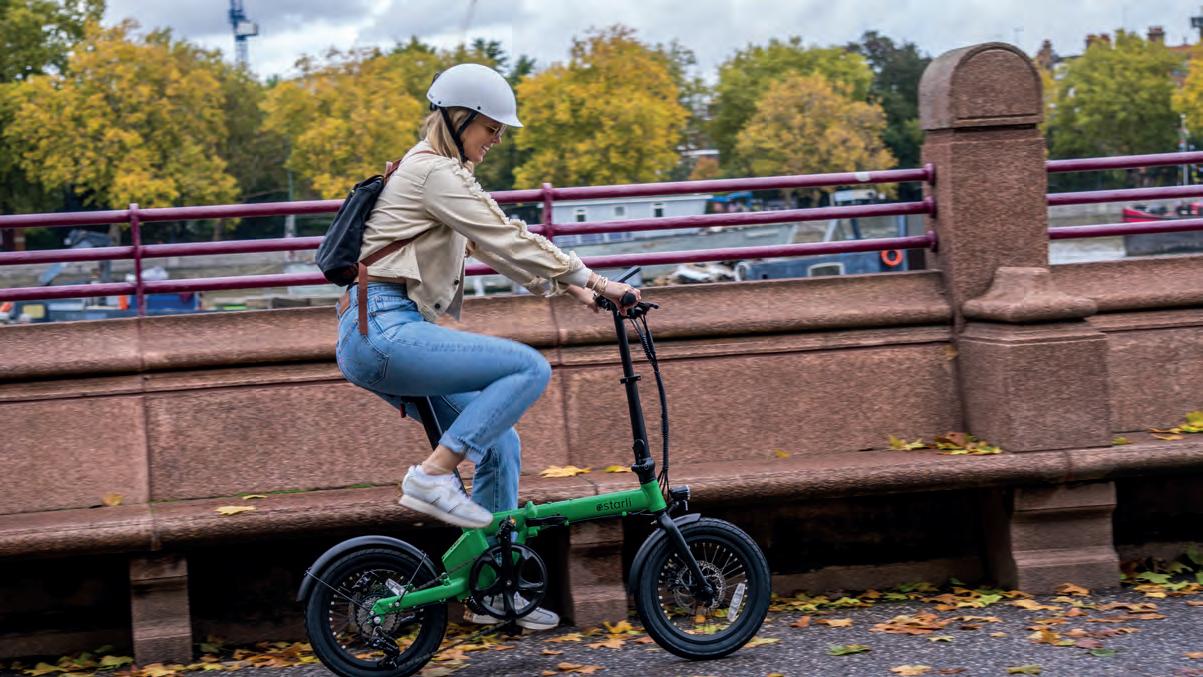



This kit is simple to fit. It clamps to the seat post then rests on the back wheel, with a grippy flywheel to drive the bike. There are three different specifications to choose from, with ranges from 10 miles up to 30 miles.
PRICE From 579€ (approx £510) rubbee.co.uk


So long as your bike uses disc brakes, a Skarper kit will turn it into an e-bike. You fit a replacement rear disc, then mount the Skarper unit to the frame. The battery takes 150 minutes to charge, and gives a range of up to 37 miles.
PRICE Around £1000 (TBC) skarper.com

Leave your old front wheel in the shed, and swap it for one from Swytch with an electric motor in the hub. The battery mounts to the handlebars, with a choice of the Air (ninemile range) and Max (18-mile range) models.
PRICE TBC (previous batch from £449) swytchbike.com


Should you shop locally, choose a big chain or buy online?
SO, IF YOU’VE read our guide to choosing a bike you’ll have a good idea of which kind will suit you. The next step is to buy one.
The local bike shop is the obvious place to start, but there are other choices. You may have to travel further than the nearest high street, but one of the big chains like Evans Cycles or Halfords will have a wide choice, plenty of bikes in stock and some exclusive brands you won’t be able to find elsewhere.
Then again, you don’t need to travel at all when there are so many internet-based companies who will deliver to your door. And with bargain bikes on sale from supermarkets, you could pick up your new bicycle while doing the weekly shop.
This is assuming you want a new bike. Shopping on the second-hand market will make your money go further, although it pays to make sure the seller is legit and the bike is in good working order before handing over any cash.

Wherever you live, you’re never too far from your local bike shop. Without a big name over the door, local shops rely on word of mouth and keeping their existing customers happy, so as a rule you should enjoy good service. Expect to find a wide choice of major cycling brands with examples of many types of bike in stock. A local shop will make sure your bike fits properly, and is a convenient option for servicing and advice.
✓ Pros Convenient; expert; wide choice
✗ Cons May not be as cheap as online

2
While the traditional local bike shop can be small with bikes crammed into every corner, the big chain stores are often more like car showrooms with plenty of space. Some big bike shops have exclusive, celebrity-backed brands you can’t find elsewhere. However, you may have to travel further than your local high street to visit one of the big chains.
✓ Pros Plenty of choice; some exclusive brands; special offers
✗ Cons Some chain stores miss the personal touch; may need to travel

3
You can avoid going to a bike shop at all by shopping online. The likes of Chain Reaction Cycles and Wiggle sell exclusively over the internet, but plenty of bike shops and our e-bike partners estarli have an online presence. The internet specialists offer great value, and most bikes are delivered with very little assembly required. There’s no chance of a test ride, although the law gives you 14 days to try out an internet purchase. Some companies offer longer return periods.
✓ Pros Keen prices; plenty of choice
✗ Cons No face-to-face contact
What could be easier than picking up a bike when you next pop in for a pint of milk? Several supermarkets offer bikes at rock-bottom prices. However, the bike will come in a box and you’ll need to do some assembly yourself when you get the bike home. This style of cut-price bicycle doesn’t have a strong reputation for quality. You could pick up a bargain, or you could end up with a poor bike you’ll soon want to replace.
✓ Pros Very low prices; convenient
✗ Cons Self-assembly required


Acar can cause a lot more harm than a bike, but a bike could easily injure someone on foot or startle a horse. That’s now reflected in the latest Highway Code.
Lots of changes were made in a big update in January 2022. Some existing rules have been tidied up or clarified, but the guiding principle is the ‘hierarchy of road users’ – those who can do the greatest harm must take the greatest responsibility.
The likes of HGV and coach drivers have the
greatest duty to look out for other road users, because they’re driving the biggest, heaviest vehicles with the most potential to do damage. Pedestrians are at the opposite end of the hierarchy, as they’re likely to come off worst in any collision. Cyclists are towards the ‘vulnerable’ end of the spectrum, so the revised Highway Code is intended to keep cyclists safer. The new rules are sometimes misrepresented as allowing vulnerable road users, in particular cyclists, to do as they please with the car driver always getting the blame. That’s not what the changes are all



Drivers should give way to cyclists who are riding straight on when turning into or out of junctions.
Cyclists should always give way to pedestrians who are crossing (or waiting to cross) the road at junctions.


Drivers should not make a close pass on a cyclist. They should leave at least 1.5 metres when overtaking cyclists at speeds of up to 30mph, and more space when overtaking above 30mph.


Don’t pass close to a horse or a horse-drawn vehicle. Give at least two metres of space and pass at no more than 10mph. Although cyclists and horse riders are both vulnerable, take care not to startle horses.

Remember that you are permitted to ride in the centre of the lane, or two abreast, while allowing drivers to overtake when it’s safe to do so.

about. Everyone needs to stick to the rules, and use the roads safely, however they choose to get from A to B. Rather there’s a shift of emphasis, and an acknowledgement that might isn’t always right. Those with the greatest potential to cause harm shoulder the most responsibility.

Just as a car driver should remember that a bike rider is more vulnerable than they are in a collision, so we cyclists need to remember that we could injure a pedestrian. We all need to take care of each other, and especially the most vulnerable people on the road.

Those who can do the greatest harm must take extra care of others



Founded by the Francis brothers in the Chilterns, estarli designs and builds eBikes to help new riders to go electric.
Estarli makes hybrid and folding eBikes that give people the freedom to travel healthily, economically and traffic-free.
Their retro-inspired bikes don’t look electric and they are carefully designed and built so you can ride effortlessly and safely.





CYCLE SCHEMES: Employees can save up to 40% off estarli eBikes by using any of the major cycle schemes. Contact help@estarli.co.uk for more information.
TEST RIDE: Estarli offers test rides via their retail partners up and down the country. Find your closest one on their website: www.estarli.co.uk
COUNCILS: Estarli runs council and community schemes to help get more people onto two wheels and remove traffic and pollution from towns and cities. For more information contact oli@estarli.co.uk
A bigger battery gets you further but usually means more weight. Try to find the right balance for you by considering your likely range requirements. Remember, if an eBike runs out of battery, it’s still a bike!
In the UK and Europe, it must be EN15194 compliant, speed restricted, and without a motorbike-esq throttle.
Pick a strong and personable brand that also has a dealer network in your region so they can look after you efficiently and promptly after purchase. Try to
find a brand that demonstrates good customer service when you contact them and has good Trustpilot reviews.
Anything under £1k is likely to have a low-spec controller, motor and components. The higher the bike spec, the longer it will last you. However, do your research because you don’t need to pay over the odds.
Think about whether you will be carrying the bike. Might you need a folding bike for getting onto trains, into the boot of your car and domestic storage? If so, how often might you do these things?



... fitting mirrors to your bike? They don’t remove the need to look over your shoulder but a mirror can improve your sense of what’s going on around


Learn these techniques and you’ll be well on the way to becoming a confident, careful and safe cyclist
What does cycling and panto have in common? You need to ‘look behind you!’
Okay, it’s a bad joke, but a serious point. It’s easy to remember to look where you are going when riding, but what’s happening behind you is just as important, particularly when approaching a junction.
Well before you reach a junction, take a look over your right shoulder. Is there any traffic approaching from behind? Only when you know what’s happening behind you can you make a safe decision about adjusting your position on the road.
This over-shoulder check is especially important when turning right from a main road to a minor road. Look back before you move to the right-hand side of your lane, then look again before turning. Traffic shouldn’t try to overtake you when you are turning, but unless you look to check how can you be sure? It’s called the ‘lifesaver look’ for a reason.
Lorries and buses have large blind spots, so take care when overtaking

Don’t assume other road users have seen you. In particular, be very cautious around large vehicles such as lorries and buses which have large blind spots. The rule of thumb is, if you can’t see the vehicle’s mirrors, the driver can’t see you. Even then be very careful when sharing a stretch of road with large vehicles. This eye-opening
video on YouTube shows why: www.youtube. com/watch?v=lV-rhiGRFTE.
In slow-moving traffic it’s generally safer to overtake a lorry or other high-sided vehicle on the right, as the driver of the vehicle has better visibility on this side, but only do so if there’s room to overtake safely without being in danger from traffic coming the other way. If in doubt, hang back and ‘guard the lane’ (see page 34).

Keep your fingers poised over the brakes if you spot hazards up ahead
Nervous, novice cyclists often ride close to the kerb, right in the gutter.
“I’m keeping out of the way of cars and buses so I must be safe,” they think. Think again. Riding close by the kerb leaves no room for error, and may encourage drivers to squeeze by when there isn’t really space. If they get halfway through their overtake, realise there isn’t room and cut back in, you’ve left yourself with nowhere to go. Instead – even when you’re on a busy road – aim to ride between half a metre and one metre from the kerb. This gives you more room, makes you more visible, and discourages unsafe overtaking manoeuvres.
With good anticipation a skilful cyclist should avoid the need to brake suddenly, but someone else’s mistake could quickly turn into your accident. So when riding on a busy road, passing junctions or cycling by a row of cars, it makes sense to keep your hands poised over the brake levers. Be ready to brake hard if there’s no other way of safely avoiding a collision. The front brake does most of the work, so if you need to stop in a hurry pull hard on this lever and apply normal force to the back brake. As you brake, shift your weight backwards slightly to stay stable and in control.

Look other road users in the eye to help you judge their intentions

No cyclist ever wants to hear the words “Sorry mate, I didn’t see you.” Hi-vis clothing and a good set of lights will help, but don’t underestimate the importance of eye contact. If you’re riding past a junction and you can see a driver waiting to pull out, look directly at them. Make eye contact if you can. Don’t assume that someone has seen you, even if you think they are staring straight at you. But if they don’t make eye contact there’s a good chance they haven’t spotted you.
Be very cautious passing the junction and get ready to brake or change direction if the vehicle pulls out unsafely in front of you.
... taking a first aid course? The likes of the Red Cross and St John Ambulance run courses which will help you attend to others in an emergency before professional help arrives. OR HOW ABOUT...
Some signal-controlled junctions have advanced stop lines for cyclists. These create room for riders at the head of a queue of vehicles, making them more visible and giving them space to move off when the lights change. Usually a cycle lane on the left leads cyclists to the stop line. Keep an eye on the traffic signal as you
approach the junction. If the signal is red and traffic is stationary, it should be safe to move up to the advanced stop line. If the lights are red and amber or green, move carefully back into the main traffic stream. Even if the light is red, it may be better to hang back rather than filter up the inside of an HGV or bus: the driver may have a restricted view.

There’s evidence that the more people take up cycling, the safer cycling becomes. Studies in many cities including Berlin and York have all supported the ‘safety in numbers’ principle.
However, some statistics from Transport for London have shown that when cycling in the capital increased, the number of riders killed or seriously injured per million journeys rose.
That suggests that infrastructure improvements and the skill level of all road users may be just as important.
Advanced stop lines are there to make the roads safer, so don’t be afraid to use them
Some studies suggest more cyclists make for safer roads


The more skilful and confident you become the happier you will be riding in traffic. But don’t ride down a busy main road if you don’t feel happy, particularly if there’s a quieter alternative close by.
On the other hand, back roads with frequent junctions can slow you down, and there may be many parked cars, inattentive pedestrians and other hazards.
Try to plan a route where you don’t have to give way to traffic too often. In particular, avoid busy roundabouts if there’s a less frenetic alternative route. Roads with bus lanes can be cycle-friendly, and a well designed, traffic-free cycle path can make your journey hassle-free.

Bikeability training gives riders of all ages and abilities the skills they need to become safe and confident cyclists.


Ride assertively but safely at junctions and roundabouts

Level 1 is for new cyclists or riders who haven’t been out on their bike for a long time. It teaches basic skills in a traffic-free environment.

Level 2 takes riders onto the road, and teaches how to cope with junctions and signal clearly to other road users.
Level 3 helps riders deal with more complex road layouts.
Find a local Bikeability instructor at www. bikeability.org.uk, or www.cycling.scot/whatwe-do/bikeability-scotland-2

Insuring your bike means you won’t be out of pocket if it’s
KEEPING YOUR BIKE securely locked cuts the odds of it being pinched, but it’s no guarantee. If your bike is stolen, you’ll be glad you had insurance.
WON’T MY HOME INSURANCE COVER ME?
Not necessarily. Check the policy documents or better still give the insurer a call to check. The more expensive the bike, the less likely it is that your home insurance will cover it. The insurer may be prepared to add a bike to the home contents policy, but this is likely to push up the premium. In which case it makes sense to compare the cost against specialist cycling insurance.
WHO WILL INSURE MY BIKE?
There are plenty of companies out there, offering different levels of cover at different prices. Some of the best known are Cycleguard (www.
cycleguard.co.uk) Cycleplan (www.cycleplan.co.uk), the ETA (www.eta.co.uk), and Velosure (www. velosure.co.uk). Get quotes from several before you commit and compare the benefits of each policy as well as the price you will pay. Look for good value, not just the lowest price.
That depends on the insurer. At a very basic level, a policy should cover theft and accidental damage. If you compete in some form of bike racing, check you’re still covered – this isn’t always the case.
When insuring a brand new bike consider a policy with new for old cover. This means if your bicycle is taken the insurer will pay out the price of a brand new replacement, not the current market value of the bike that’s been stolen.
Some policies include get-you-home cover, so if your bike is damaged or vandalised the insurer will pay for a taxi so you’re not stranded.
This adventure road bike has hydraulic disc brakes. They’re powerful and easy to control, but not as easy for the home mechanic to maintain as traditional rim brakes.


Always keep the tyres inflated properly – there should be a recommended maximum or range of pressures given on the side of the tyres. Once a week or so, check the tread for any sharp objects which could cause a puncture. Remove whatever you find.
Keep the chain running smoothly with a high-quality chain lubricant rather than generalpurpose oil. A dirty chain will wear out quickly and reduce the life of other components. Some degreaser and a stiff wire brush should shift the grime, or you could buy a chain cleaner.
Check for any fraying or wear. If the cables are worn either replace them yourself or get a professional mechanic to do it for you.

If there’s a slight wobble as the wheel rotates then it’s out of true. Check for loose spokes and tighten them evenly. It’s not especially difficult to true a wheel but it does take patience, so if in doubt head to your local bike shop who should fix the wheel for a few pounds.
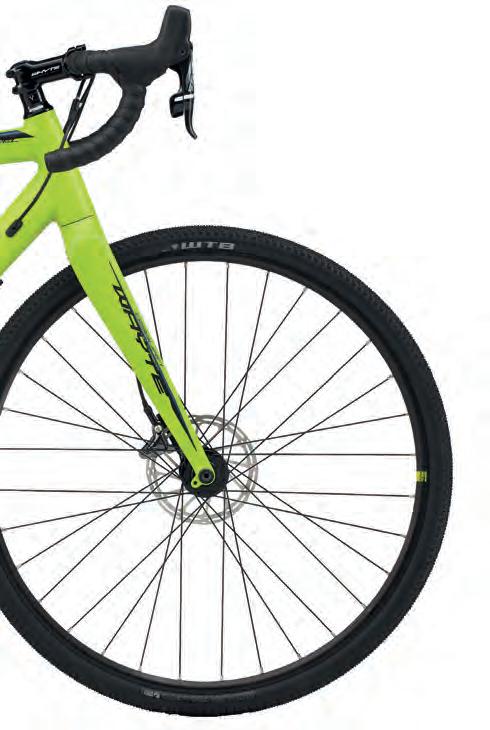
On a bike with disc brakes spin the wheel to check the rotor isn’t bent or warped. If it is the wheel won’t rotate smoothly. With rim brakes, make sure the brake blocks are hitting the rim of the wheel not the tyre when you pull on the lever. Be sure to clean away any grime.
... going tubeless? Some modern wheels and tyres can run without inner tubes, meaning no more pinch punctures to worry about, and adding sealant fixes small punctures as you ride.
Take care of your bicycle and it should give many miles of reliable cycling
BIKES AREN’T THAT complicated. With a few tools it’s not hard to keep a bicycle working well, although for more complex tasks or anything safety-related it makes sense to turn to a professional mechanic. Prevention is better than cure, so regular cleaning together with checking the brakes, tyres and cables will save hassle – and money –in the long run.
The headset is the set of bearings on which the fork moves within the bike frame so the rider can steer. If the headset is too tight the handlebars won’t turn smoothly and freely. Too loose and you’ll feel a knocking through the bars.
Even more involved home maintenance isn’t difficult with practice. There’s something satisfying about hitting the road on a bike which is riding perfectly, and knowing that’s down to your own efforts.
That said, plenty of riders would no more adjust bicycle gears than they would strip down the engine of a car. If that sounds more like you, then your local bike shop will be happy to sort any niggles. They’ll want paying of course, but a basic service adjusting the gears, brakes and truing wheels will cost around £50.
... a job in the bike trade? If you enjoy fixing your own bike, consider training as a mechanic. A qualification from Cytech (www.cytech. training) could open up a whole new career.


Put a small amount of air in the replacement tube to give it shape, which makes it easier to fit under the tyre.

Insert the valve in the valve hole, and feed the tube under the tyre.


Put the wheel back in the fork or frame. Tighten the quick release, make sure the wheel is centred properly, and if you slackened off the brakes in step two be sure to tighten them again. Keep the punctured inner tube so it can be fixed with a repair kit at home when you have more time to spare.



Be sure that one side of the tyre is securely on the wheel, then begin to hook the other side onto the rim. Start at the valve hole and work your way around using both hands so they meet at the far side. The last part of bead may need strong thumbs or some persuasion with a tyre lever, but be careful not to pinch the tube. Check carefully that no inner tube is poking out, then pump the tyre back up to the correct pressure.





Front lights don’t come any cleverer than the Exposure Strada RS AKTiv The roadspecific beam pattern works whichever way up the light is mounted, so it can be fitted under or over the bars. The latest model has been upgraded to a massive 1300-lumen output, and in AKTiv mode the light will adjust automatically to avoid dazzling other road users. exposure-use.com


You get a lot of light for your money with the Cateye Ampp 500. Select the most powerful light mode and you have enough power to see and be seen on unlit roads. Cutaways in the body of the light give good side visibility, and the run-time is up to 50 hours in flashing mode. cateye.com
BARGAIN BASEMENT
The tiny Elops CL500 rechargeable LED light is cheap, but it will help you stand out during the day (you’ll want something more powerful at night). A neat trick is the way it can be used on the front or the back of your bike, switching between white and red light. decathlon.co.uk



One of the most innovative products around is the Redshift Sports Arclight pedal. These include bright front and rear lights to make you more visible to other road users. They cost from £129.99, but are claimed to make you 57% more visible.

You need deep pockets for the Exposure Blaze Mk3 ReACT + Peloton but it’s packed with brilliant features. Thanks to Ambient Kinetic Technology the light automatically brightens under braking. The run-time is 6-48 hours, depending on mode. £115 exposure-use.com
The Bontrager Flare RT punches above its weight – Bontrager claims the 90-lumen output can be seen 2km away. There are three flashing modes, two steady settings, with a claimed run-time of up to 13.5 hours. Bontrager makes a similar front light – they make a good pair. £50 trekbikes.com

It’s cheap at full price, but we’ve seen the FEW Battery Rear Light discounted as low as £5. With a seven-lumen output it’s not especially bright and don’t expect too many clever features. But this is a great budget buy or emergency back-up. £8 evanscycles.com

END
One of the lightest helmets you can buy, the Kask Protone Icon is designed to meet Kask’s WG11 standard for protecting against rotational impacts. A reflective insert in the rear catches car headlights for better nighttime visibility. Three sizes are available. kask.com


£245
MID MARKET £64.99
The Hummvee Plus is designed for mountain biking, but it works well for all kinds of riding. It’s a good-looking lid and comes in seven different colours. Endura runs a helmet replacement scheme that reduces the cost of a replacement after an accident. endurasport.com
Fox Racing Flight Sports Hardshell Helmet
You get a penny in change from £40 if you buy this helmet at full price, but we’ve seen it discounted to half price or even less. This BMXstyle lid looks good, while the eight vents should keep your head cool while riding. foxracing.co.uk BARGAIN BASEMENT
£39.99

Designed for commuting, the Pearson Streets Ahead waterproof jacket looks good both on and off the bike. There are lots of reflective details as well as hi-vis reversible cuffs so you stand out in traffic. Pearson Cycles offers the jacket in a men’s and a women’s fit. pearson1860.com

Good value at full price, we’ve seen the dhb Flashlight Women’s Waterproof Jacket on sale with 50% off. There’s a choice of four colours, and the fabric is highly waterproof and breathable. Reflective details help you to stand out when riding at night. wiggle.co.uk

£85

The Triban RC 120 budget jacket will get you seen and keep you dry in a light shower, although it won’t keep out heavy rain. The colour really stands out in the day, while lots of reflective materials to catch car headlights at night. decathlon.co.uk
... wearing a regular waterproof rather than a cycling jacket? Just be aware that any waterproof designed for general use may not be as breathable. OR HOW ABOUT...
These Rapha Women’s Randonnee Shorts are lightweight, breathable, quick drying and stretchy. They look great, on or off the bike, and are also available in a men’s cut. Okay, these shorts are pricey, but they’re made to last. rapha.cc
... changing your saddle?
The further you ride, the more important it is to find a saddle which suits you. Everyone is different, so if possible try before you buy.

£80
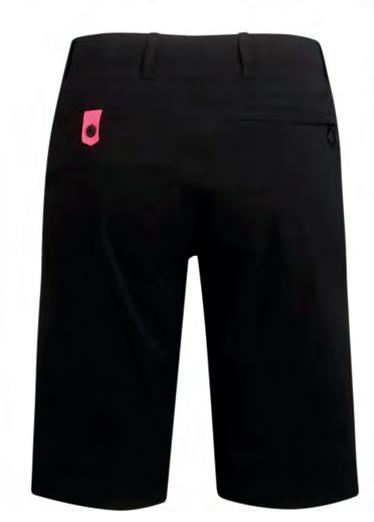
The clue is in the name: Proviz kit is all about making you more visible on the bike. These brightly coloured Proviz Classic Waterproof Cycling Gloves certainly do that, and there are lots of reflective areas to show up at night. They keep out the rain too. provizsports.com
£39.99

These Le Col Hors Category Deep Winter Gloves should keep your fingers warm in cold weather, but without being bulky. Windproof material keeps out the chill, while a DWR coating adds water resistance. The price is high, but you are paying for topnotch quality. lecol.cc

Madison Freewheel Mitts come with padded palms and elasticated cuffs, so these budget gloves will relieve pressure on your hands while riding. With six sizes and four colours, you really can’t go wrong at this price. madison.cc

Available in five sizes, the Endura Xtract Gel Short II padded Lycra shorts are good value. The pad has an antibacterial finish and a dimpled structure to improve comfort, and the inside leg is free of seams to avoid irritation. endurasport.com
BARGAIN BASEMENT
You could spend a small fortune on upmarket cycling shorts. Or you could just buy the Triban Essentials Mens’s Road Shorts and have change from a tenner. They’re padded for extra comfort on the bike and come in six different sizes. decathlon.co.uk


If you have an action or safety camera on your bike, you may have footage of a near-miss. Or you could be involved in a collision, and believe the other party is to blame. In England and Wales, you can upload footage for the police to review using the National Dash Cam Safety Portal. nextbase.co.uk/ national-dash-camsafety-portal/
There’s no equivalent in Scotland, but you can report incidents through an online form: scotland.police.uk/ secureforms/c3/

You get two devices for the price of one with the Cycliq Fly12 Sport , because it’s a 600-lumen front light as well as a camera. If you crash, the Fly12 Sport will trigger incident protection which locks audio and video files either side of the incident. Pair it with the Fly6 rear light/ camera to record what’s behind you too. cycliq.com
£349.98*
With its large image sensor, cinematic quality footage and video stabilisation, the GoPro Hero 11 Black is a brilliant action camera if your budget stretches far enough. It’s ideal for filming two-wheeled adventures, but overkill as a safety camera to record incidents on the road. gopro.com
*With GoPro subscription
£299
BARGAIN BASEMENT
Chilli MkII Action Cam
Although it can’t match a high-end GoPro for tech or features, you still get good quality footage from the Chilli Action Cam, and it will record up to four hours and 30 minutes of footage on each charge. The battery is replaceable, so the camera isn’t junk if the battery fails. chilli-tech.com

£69.99

IT’S NOT OFTEN you have cause to thank Her Majesty’s Revenue and Customs, but the Cycle to Work scheme is one good reason to be grateful. Provided your employer has signed up, you can save between 32% and 47% of the cost of a brand new bike.
Most bike shops take Cycle to Work vouchers. Operators include cyclescheme.co.uk, bike2worksheme.co.uk, and cyclesolutions.info.
Instead of paying the full cost of the bike (and accessories) up front, you pay a proportion of the price each month through your salary. The saving comes through not paying any income tax or National Insurance on the money spent on the bike.
Technically the bike belongs to your employer and you are hiring it from them until the end of the agreement (often 12 months but sometimes longer). In theory there’s no guarantee that your employer will offer the bike to you at the end of the agreement, but in practice that’s usually the employer’s intention.
The bike is legally yours once a final payment has been made,
In theory at least 50% of the bike’s use should be for work
either to your employer or sometimes the scheme’s operator. Another option is to extend the hire beyond the original period so that when the hire eventually ends the bike is worth less. Some schemes ask for a small deposit to be paid at the start of the extended agreement, but no monthly payments. At the end of the term the bike is yours, or you can hand it back and ask for your deposit to be returned.
If you want to buy the bike at the end of the original hire period then the employer and scheme operator are obliged to work to the HMRC’s definition of ‘Fair Market Value’. This is 18% of the original price after 12 months if the bike cost less than £500, or 25% if it cost more. The valuation decreases significantly for extended hire periods, which is
why these longer hires can be so cost effective: a bike which cost £500+ is only valued at 7% of the original price after four years.
The purpose of the scheme is to encourage more people to cycle to work rather than to boost cycling in general, so in theory at least 50% of the bike’s use should be for work purposes. In practice this is difficult for an employer or HMRC to keep tabs on.
You can also buy safety accessories and other essentials through the scheme. These could include a bike helmet, lights, locks, and mudguards. Funding accessories as well as a bike is a sensible way to get the most from the Cycle to Work scheme.
You wouldn’t leave a suitcase full of money in the street. Why do the same for your bike?
WHEN IT COMES to bike security, the most obvious advice is to use a bike lock. Even if you’re only popping into a shop for a moment, always use a lock as it only take a moment to steal a bike.
Go for a lock that’s been rated by Sold Secure, as this will guarantee a good level of theft resistance. Brands with a strong reputation include Abus, Kryptonite and Litelok.
Look for a lock which is easy to handle. Ideally, you should be able to lock and unlock it with gloved hands. If you ride whatever the weather, check for weatherproofing around the key barrel. You also need to think about how you are going to carry the lock. Many locks have mounts for fitting the bike to a bicycle frame, which saves the hassle of finding room in a bag. Think twice about carrying the lock on your body unless it has been designed to be worn this way (for example, Hiploks are designed to sit flat against the body, and so reduce the chance of being injured by the lock in a fall).
There are plenty of cheap, thin and flexible

locks on the market. On the face of it these look tempting, as they are easy to carry and straightforward to use. But these inexpensive and lightweight locks rarely offer good security – you’re much better off spending more on something really tough and robust.
It might seem like overkill, but using more than one lock is a smart move. That’s especially true if you have quick-release skewers on your wheels. These make it easier to remove a wheel to fix a puncture, but also make life easy for a bike thief. Make sure a lock passes through your frame and one of the wheels, securing to something solid like a bike stand. Then use the second lock to secure the other wheel to the bicycle frame.
Where you lock your bike can also make a difference. At school, college or work, if there are dedicated bike parking facilities then use them, especially if they are monitored by CCTV, or behind a security barrier.
If you need to leave your bike in a public place, the more public the better: don’t put it somewhere a
Not all bike locks are created equal. It pays to use the best lock you can afford

Lock it! Never leave your bike unattended, and use the best lock (or locks) you can afford.
Mark it! You’ll have a better chance of getting your bike back if it has a security mark or if it has been electronically tagged.
Insure it! If it can’t be recovered, at least you’ll get your money back (see page 36 to find out more).
Leave it safe! Avoid leaving your bike in a public place if possible, but if you have to put it where there are plenty of passersby.
thief can work unseen. At night, make sure it’s left in a well-lit area. And at any time of day, check for any signs to make sure you are parking legally.
Bike thefts don’t just occur on the street. It pays to think about security at home, too. A garden shed isn’t the most secure location, but a ground anchor sunk into a concrete floor gives more peace of mind.
It may not be a cheap option, but a dedicated cycle shed from a company like Asgard (www.asgardsss. co.uk) takes home security to another level.
Having your bike marked with a unique number improves your chances of getting a bike back if it’s stolen, and may just put off a thief in the first place.
Schemes like Bike Register (www.bikeregister. com) will mark your bicycle frame with an indelible stencil etching, apply a deterrent warning sticker to the bike, and will register the bike and owner online. Another option is to use a small tracker like an Apple AirTag or a Samsung Galaxy Smart Tag. You can buy mounts to hide these under a saddle or beneath a bottle holder.
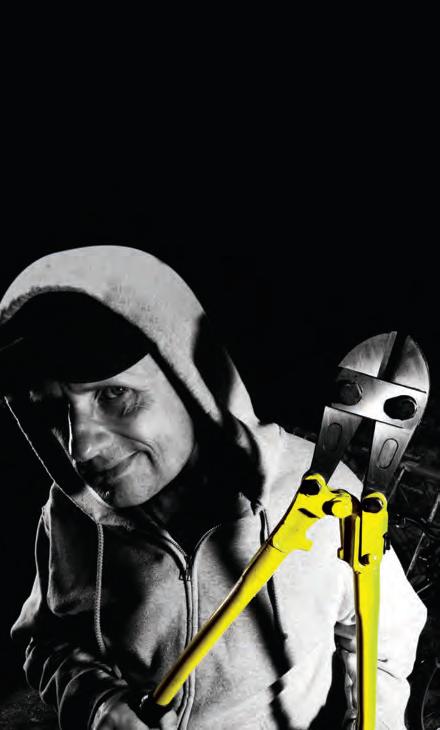
Take care at home! Don’t assume your bike is safe around the back of your house or kept in a hallway. Secure it to something immovable, preferable in a locked shed or secure bike storage.
Don’t let a bike thief get their hands on your bike. Keep it safe and secure wherever you take it

BE SAFE BE SEEN.


DayBright - Unique pulse pattern designed for daylight use, more obvious than a regular “flash” and visible from over a kilometre away, even in the brightest conditions.

